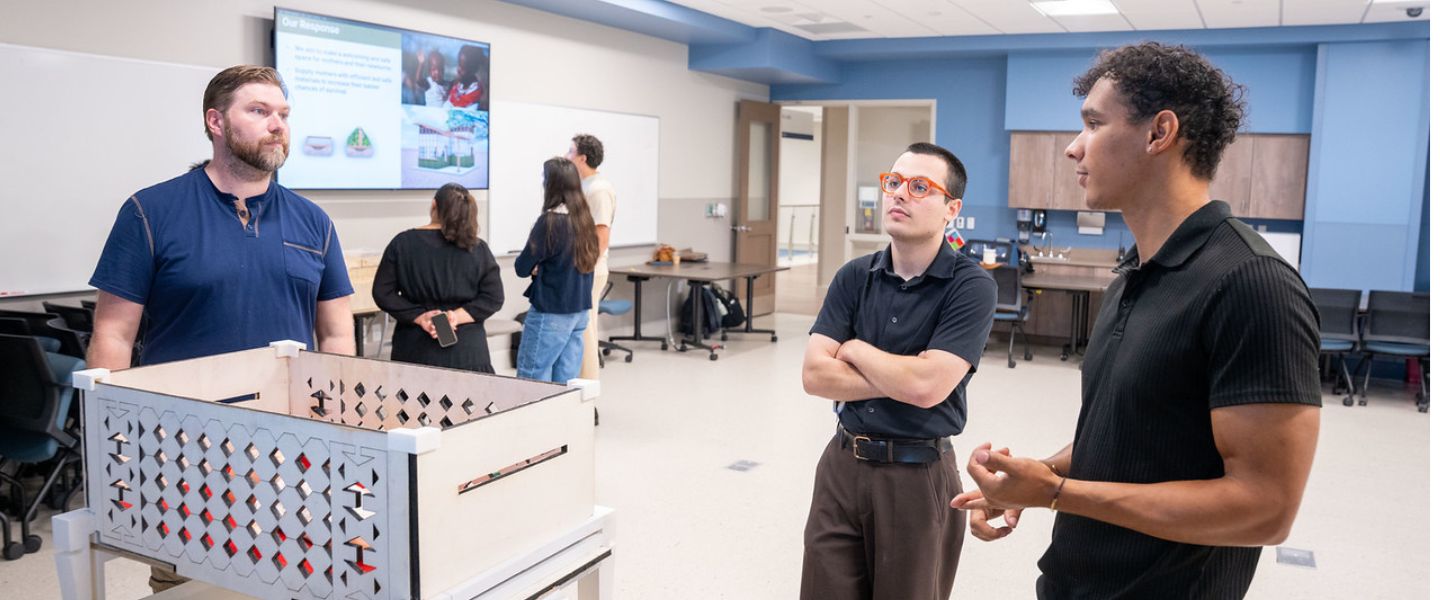Cross-disciplinary project addresses neonatal mortality in underserved communities
In many underserved communities worldwide, neonatal mortality remains a significant public health challenge. Families in these areas often lack access to basic health care resources and safe sleep environments for newborns.
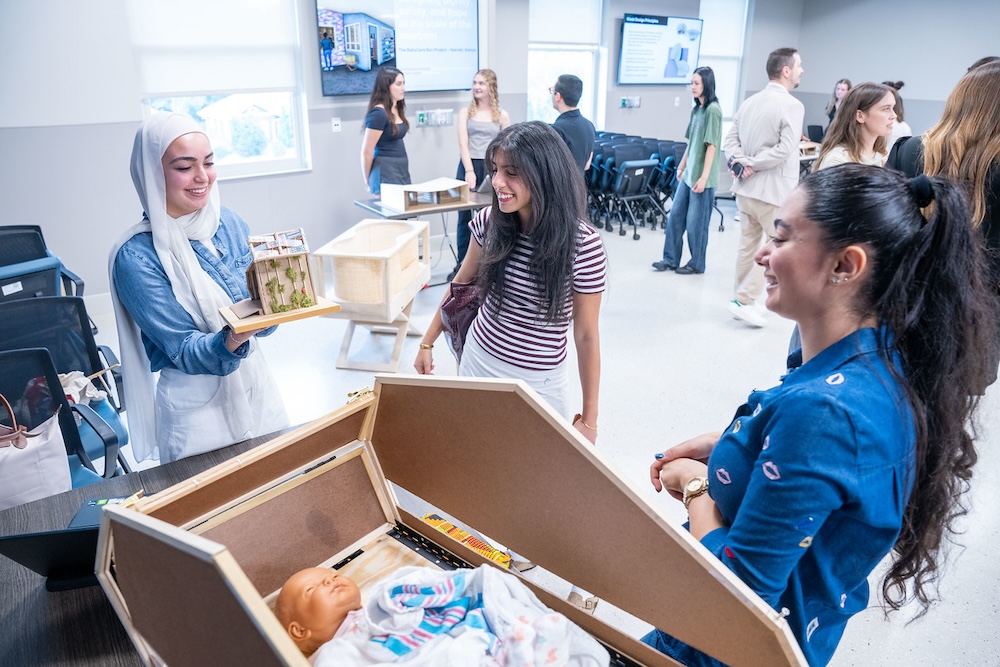
To address this urgent need in a settlement in Kenya, students from O'More College of Architecture and Design designed safe, affordable sleeping environments for newborns through the "Baby Care Box" project. Over a two-week intensive design sprint, students developed both baby boxes and community distribution kiosks for implementation in Nairobi. Teams presented their final designs Wednesday, Sept. 24, at the Belmont University Center for Interprofessional Engagement and Simulation (BUCIES).
Cross-Disciplinary Collaboration
The project required architecture students to partner with Doctor of Nursing Practice students as mentors, integrating clinical expertise into every design decision. This collaboration proved essential for translating health care knowledge into practical solutions that address real safety requirements.
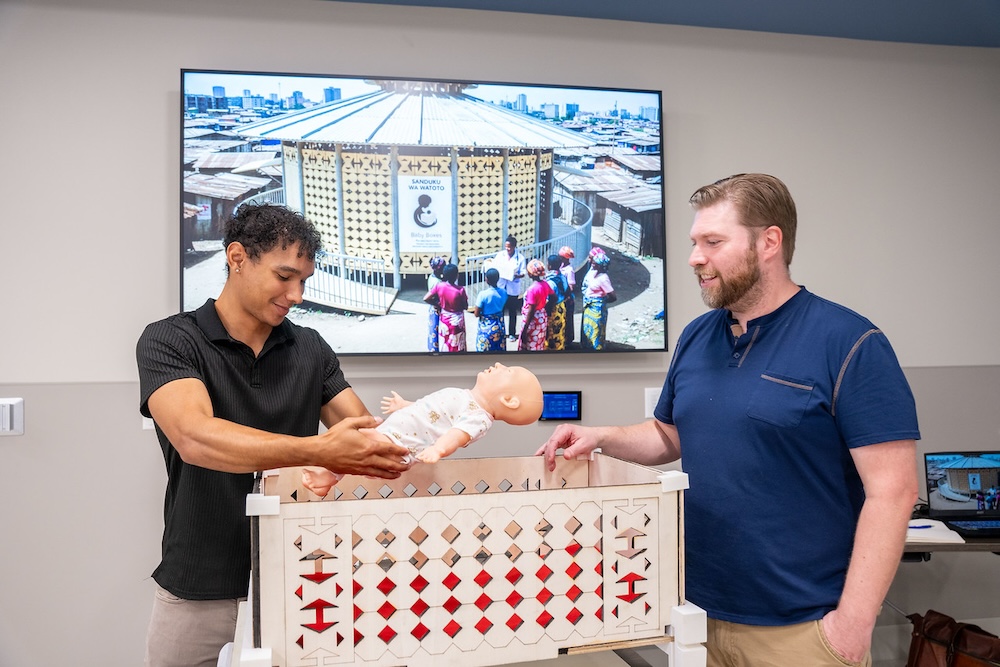 “Working with the nursing students was great,” said senior architecture major Payton Culp. “They taught us things we never would’ve thought about, like how safe sleep works and why you can’t have any padding on the walls because it’s a suffocation risk. We’d show them our designs, and they’d point out what needed to change. Their input really shaped what we ended up with and made sure the box was actually safe to use.”
“Working with the nursing students was great,” said senior architecture major Payton Culp. “They taught us things we never would’ve thought about, like how safe sleep works and why you can’t have any padding on the walls because it’s a suffocation risk. We’d show them our designs, and they’d point out what needed to change. Their input really shaped what we ended up with and made sure the box was actually safe to use.”
A Partnership Rooted in Real Need
The project emerged from a partnership between Belmont Global Health Innovation and Olivelink Healthcare in Nairobi, where 90% of clients live in informal settlements without reliable access to clean water, sanitation or health care. In 2024 and 2025, Professor of Practice Dr. Olivia Bahemuka and Director of Global Health Innovation Dr. Shelby Garner traveled to Kenya where they met Olivelink founder and CEO Josephine Suleiman and witnessed her own baby box innovation firsthand.
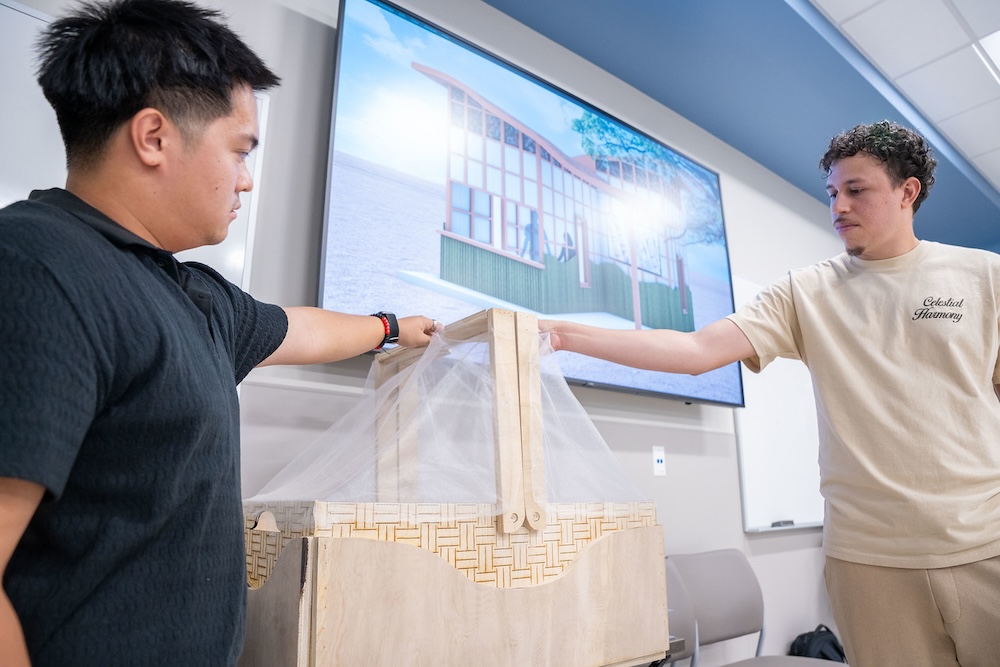
"When Josephine showed us the original baby box and placed the lid on top, it said 'Warning, do not cover when baby is inside,'" Garner shared. "That's when we realized the cardboard box also served as a crib. Many of the items inside — blankets and knit baby caps — were custom-made by women in the neighborhood, creating a microbusiness where the clinic purchased handmade items from women in the community."
During her time in the settlement, Bahemuka was struck by the ingenuity of families creating makeshift solutions with limited resources.
“During my time in East Africa, I met mothers who were already trying to create makeshift baby boxes with the little they had,” Bahemuka shared during the final presentations. “It occurred to me that with the creativity of our students, we could design something safer and more sustainable. Nurses and designers are natural problem-solvers, so bringing together nursing and architecture students felt like the perfect way to address a real need.”
Chair of Architecture & Director of Digital Fabrication Dr. Fernando Lima emphasized the project's alignment with the college's mission of design, collaboration and impact. Rather than traditional architectural projects, students engage with real-world situations that help communities in need.
“Our students could just be learning how to design a house, and that would be valuable. But what we’re really trying to do is give them opportunities to design while also making an impact,” said Lima. “These projects let them apply their skills in real-world situations that truly help communities in need.”
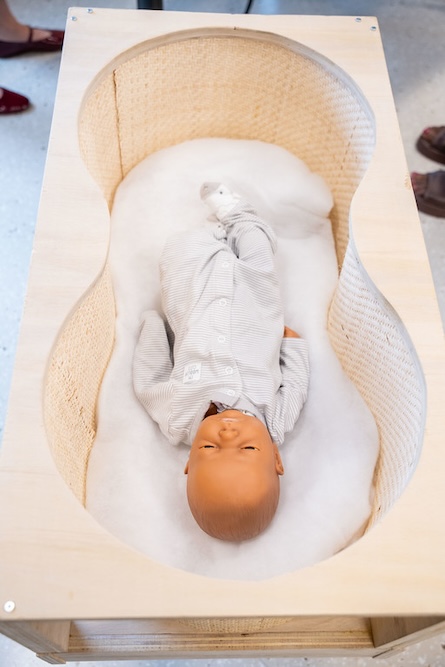 The Baby Care Box project also reflects Belmont’s broader commitment to preparing nurse leaders who can drive change across health care systems. Through the Doctor of Nursing Practice Leadership and Innovation track, students are trained to think creatively about persistent health care challenges and to build partnerships that turn ideas into action.
The Baby Care Box project also reflects Belmont’s broader commitment to preparing nurse leaders who can drive change across health care systems. Through the Doctor of Nursing Practice Leadership and Innovation track, students are trained to think creatively about persistent health care challenges and to build partnerships that turn ideas into action.
“We need leaders who think differently about health care problems and partnerships,” said Dr. Kathryn Dambrino, chair of graduate nursing and director of the Center for Nursing Innovation. “That’s why I’m so grateful for collaborators like Dr. Lima, who invite us to the table. By working side by side, our students aren’t just learning in theory — they’re creating solutions that can make a real impact on a global scale.”
Affordable, Locally Sourced Solutions
Students designed lightweight, waterproof boxes using locally available materials such as bamboo plywood. One team created a box for approximately $13, demonstrating the potential for affordable, scalable solutions. The designs incorporated mosquito nets, breathable materials and storage for basic health supplies while maintaining cultural sensitivity. 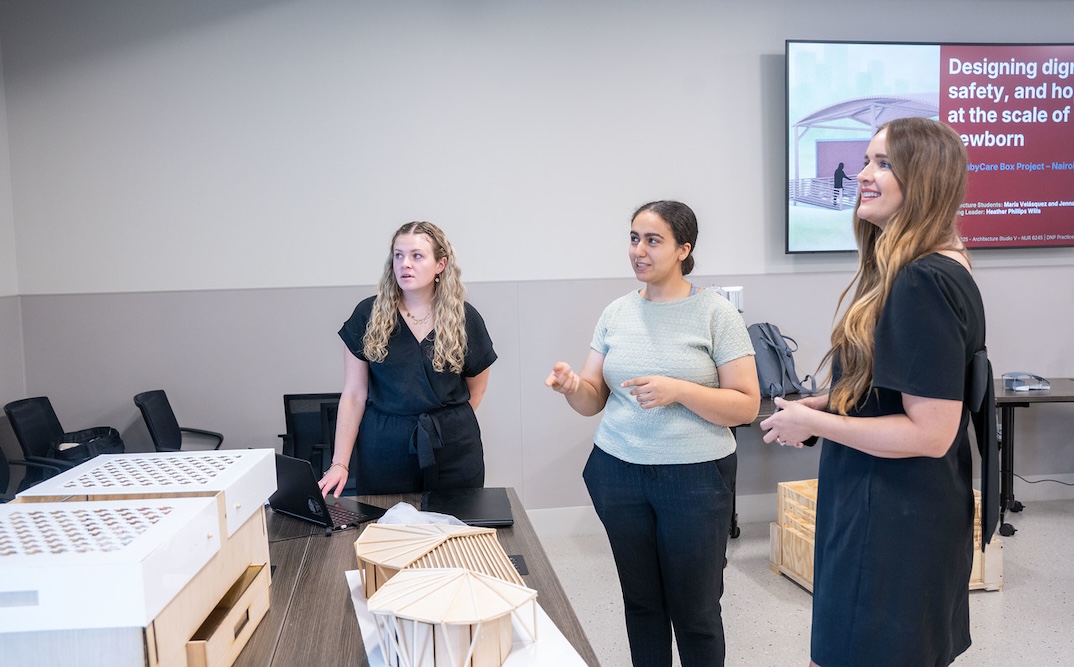
The accompanying community kiosks serve as distribution and education centers where healthcare workers can demonstrate proper box usage and safe sleep practices. These structures use simple, low-cost construction methods and locally sourced materials to ensure sustainability and community ownership. Students designed the kiosks to be operated by community members, creating local employment opportunities alongside the health intervention.
Campus Partners Help with Realistic Testing
Courtesy of BUCIES, students were able to use realistic baby mannequins during their presentations to demonstrate how their designs would function in real-world conditions, testing weight capacity, safety features and usability.
After the project wrapped up, student teams pitched their innovative designs to Suleiman during a virtual call.
"One team even talked about including carbon air filters to improve air quality in the home," said Garner. "Josephine was so impressed with their critical thinking and thoughtfulness in creating sustainable and culturally responsive health designs."
The Baby Care Box project ultimately represents more than an academic exercise; it’s a model of how collaboration across disciplines can generate solutions that are both innovative and deeply human-centered.
“This project and partnership demonstrate what Belmont is all about,” said Lima. “Cross-disciplinary collaboration that leads to real impact.”
Learn More
Learn more about the programs in this story

